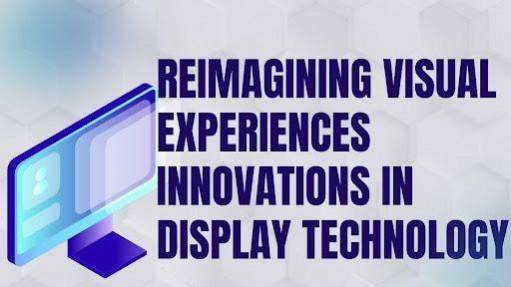
A New Era in Display Innovation Technology has always been at the forefront of redefining how we see the world. Muralidhar Manohar Shenoy, an expert in display technology, explores the latest advancements revolutionizing visual interfaces. His insights highlight the breakthroughs in MicroOLED, Quantum Dots (QD), and Flexible OLED technologies, each playing a critical role in shaping the future of digital displays.
MicroOLED: The Future of High-Resolution Displays
MicroOLED technology is redefining screen resolutions with exceptional pixel density and energy efficiency. Unlike conventional OLEDs, MicroOLED displays use a silicon-based backplane, enhancing clarity, brightness, and response time. This innovation is particularly crucial in augmented reality (AR) and virtual reality (VR) applications, where high-resolution displays ensure immersive experiences. By delivering deep blacks and vibrant colors while consuming less power, MicroOLED is set to become a dominant force in compact, high-performance display applications.
The Role of Quantum Dots in Color Enhancement
Quantum Dots (QD) have emerged as a transformative element in display technology, improving color accuracy and brightness. In the case of an LCD display, it works by converting blue LED light into pure red and green. QD technology significantly expands the color spectrum, enabling near-perfect color reproduction. QD-based displays not only enhance viewing experiences but also improve energy efficiency, making them an attractive solution for modern high-definition televisions, tablets, and monitors. Their application in next-generation OLED displays is pushing the boundaries of what screens can achieve in terms of brightness and contrast.
Flexible OLED: A Game-Changer for Device Design
Flexible OLED technology is revolutionizing the design possibilities of electronic devices. Unlike traditional rigid screens, these displays can bend, curve, and even fold without compromising image quality. This innovation has paved the way for foldable smartphones, wearable devices, and next-generation automotive dashboards. With advancements allowing flexible screens to endure over 100,000 bending cycles while maintaining superior display quality, this technology is set to transform portable and interactive devices, making them more adaptable to modern needs.
Advanced Display Technologies in Everyday Applications
Beyond consumer electronics, advanced display technologies are making significant inroads in various industries. The healthcare sector, for instance, is leveraging high-resolution, low-latency screens for medical imaging, enhancing diagnosis accuracy. In the retail sector, interactive displays with gesture and touch control are reshaping customer engagement. Similarly, in education, immersive visual tools are enhancing learning experiences through augmented reality and interactive digital content.
The Evolution of Manufacturing Processes
The manufacturing landscape of display technologies is evolving rapidly. New fabrication techniques have enabled greater efficiency, reducing production costs while maintaining high quality. Countries in the Asia-Pacific region are at the forefront of this shift, pioneering innovative approaches to producing high-resolution displays at scale. The integration of AI-driven manufacturing has further optimized production, ensuring precision and minimizing material wastage, leading to more sustainable and cost-effective display technologies.
Automotive Displays: The Next Frontier
Automotive displays are undergoing a significant transformation, integrating advanced OLED and QD technology to enhance in-car interfaces. From curved dashboards to transparent head-up displays (HUDs), these innovations are improving driver assistance and navigation systems. With market penetration increasing, vehicles are becoming more intuitive and visually sophisticated, offering enhanced safety and convenience for users.
Looking Ahead: The Future of Display Technology
The future of display technology is set to become even more dynamic, with continuous advancements in resolution, efficiency, and design flexibility. Emerging trends include AI-enhanced screen adjustments, transparent displays for augmented reality applications, and ultra-thin rollable screens. As these innovations develop, they promise to redefine how we interact with digital content in daily life, making information more accessible, engaging, and visually striking.
In conclusion ,Muralidhar Manohar Shenoy's insights into display technology provide a glimpse into a future where screens are not just passive viewing platforms but interactive, immersive, and integral components of modern technology.

















